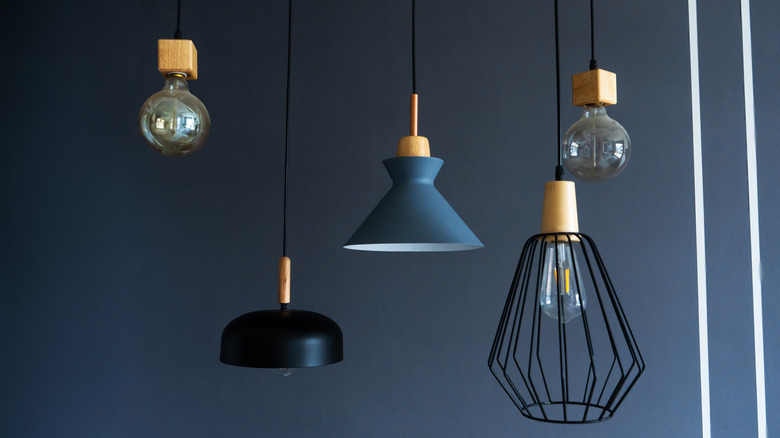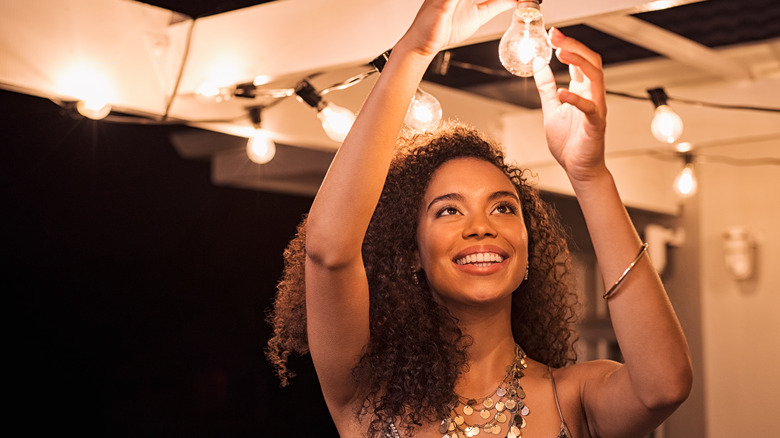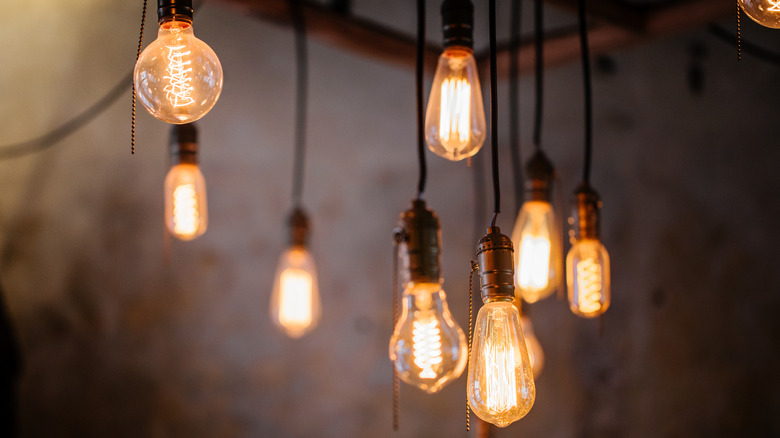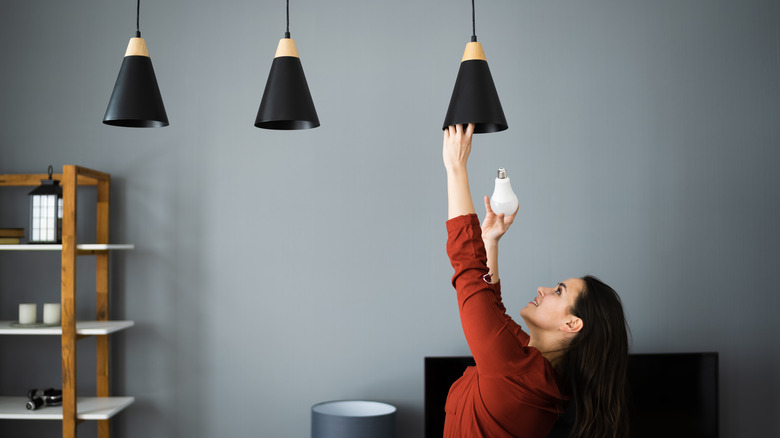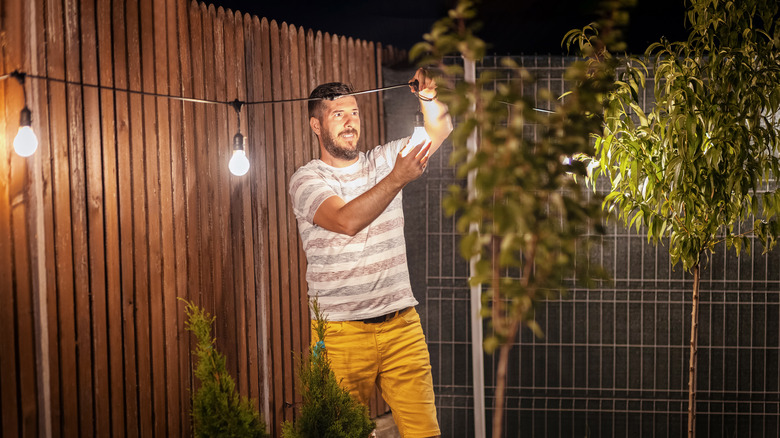LED Vs. Incandescent Light Bulbs: What's The Difference?
Modern, energy-efficient appliances are replacing the old, standard options that we've always used in our homes. For instance, washers, dryers, blenders, fridges, vacuums, and many other types of home appliances are now much better for the environment and your pocket. Similarly, traditional light bulbs have been redesigned to better conserve energy, while LEDs (light-emitting diodes) are rapidly becoming the new standard in modern light fixtures, notes ShineRetrofits.
LED bulbs are made from small electronic diodes that remain cool to the touch, whereas incandescent bulbs are made up of filaments (wires or threads) that get hot and eventually burn out. LED bulbs are six or seven times more efficient than incandescent bulbs, using 80% less energy, however, they don't fit all situations. Incandescent bulbs are cheap, simple, and known for their bright, harsh light, explains MyMove. They may have improved in some ways, like providing softer colors, but they are quickly becoming a thing of the past.
How does the appearance differ?
Incandescent and LED light bulbs differ in several ways, including their brightness and the features they offer. A 9-watt LED bulb, for example, would produce the same amount of light and brightness as a 60-watt incandescent bulb, states Techlicious. Incandescent bulbs solely give off a single color. LED bulbs, on the other hand, are popular for their smart features, which allow you to change the color and temperature of light.
Techlicious also notes that both bulbs differ significantly in how well they show the true color of an object as it appears in the natural world. This accuracy can be checked with the color rendering index (CRI) scale, which goes from 0 to 100. Incandescent bulbs usually have a perfect score of 100, while LED bulbs are said to be good at 80 and excellent at 90 and above.
What are the differences in cost?
LEDs tend to be on the more expensive side when it comes to the general cost of bulbs. According to NOPEC, you can expect to pay up to $4 per LED bulb and around $1 for an incandescent one. However, these upfront costs differ in terms of the cost of usage. For example, keeping an incandescent bulb on for 25,000 hours would cost around $169, while it would cost just $30 for an LED bulb.
LED bulbs also last longer than incandescent bulbs — about 50 times longer! Dengarden estimates that it costs about $2.81 to buy and operate an LED for three hours daily for a year, yet it would cost $8.89 for a similar incandescent bulb. While the cost of running the incandescent bulb stays the same in the second year, it actually decreases for the LED.
What are the differences in energy use?
Depending on the type you buy, an LED bulb might be a little more costly, but they are worth the extra money since they help you save on utility bills in the long run. Incandescent bulbs, on the other hand, run up higher electric bills because they consume much more energy. Data from the U.S. Department of Energy (DOE) shows that, generally, incandescent bulbs last around 1,000 hours, while LED bulbs can last 30,000 hours or more. In an effort to improve energy efficiency, the DOE has put in place a rule stating that all light bulbs must emit a minimum of 45 lumens per watt or be discontinued, a standard that incandescent bulbs often fail to meet (via CNN).
Recommended uses for each
If you need something cheap and simple, incandescent bulbs are still an option. They are a good choice for temporary lighting on patios, for an outside gathering, or to light up a construction site. They're also ideal for lighting areas or appliances that reach high temperatures because LED bulbs struggle with heat, suggest 1000Bulbs.com.
Conversely, if reducing your carbon footprint is a priority, LEDs are definitely the way to go. They're great for long-term use since they don't need to be switched out too often, and they don't require any maintenance. In addition, modern technology has made a lot possible, controlling your LED lighting can now be done through your smart devices, allowing you to change the color temperature or schedule when and how they turn on, which gives you more control over your lighting.
